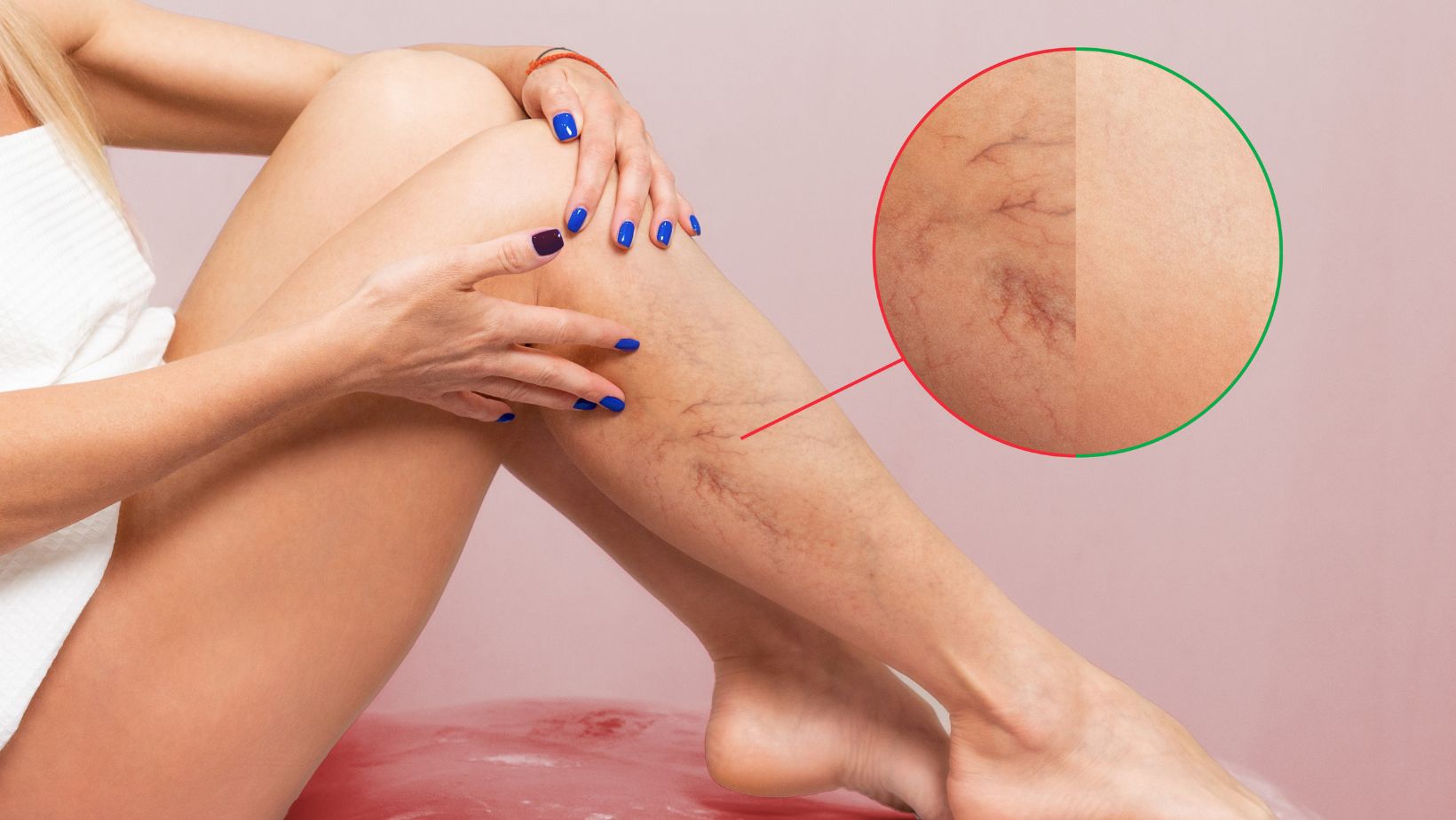Have you ever noticed that one of your legs feels colder to the touch than the other? While this sensation may seem minor or temporary, it could indicate an underlying circulation problem. The body’s circulatory system is complex, and any imbalance or disruption in blood flow can manifest as differences in temperature between your limbs. For those experiencing this regularly, it’s essential to understand the potential causes and risks involved.
In this blog post, we will explore the factors that can lead to poor circulation and how they may affect one leg more than the other. Whether you’re experiencing a cold left or right leg or even numbness, it’s essential to recognize that this issue could be pointing toward a more significant health concern. So, if you’ve ever wondered, “Why is My Left Leg Numb or Colder Than My Right?“—keep reading to uncover the answers and understand why paying attention to your body’s signals is crucial.
How Does Circulation Occur In The Body?
To correctly determine why one leg might be colder, one must understand how blood flows through the body. Arteries carry oxygenated blood to the various organs and limbs of the body, such as the legs, while veins take deoxygenated blood back to the heart. This continuous cycle guarantees that your organs and tissues get the oxygen and nutrients they require. When this process is fully functional, your legs are supposed to feel similar in terms of warmth.
However, if this process is interrupted, for example, by narrowing the arteries, blood clots, or if the heart is weakened, some areas of the body may receive insufficient blood. Limited blood flow can cause the temperature in the affected region to drop, which is why it is often the legs, feet, or toes.
Causes of One Leg Feeling Colder Than the Other
One leg commonly feels colder than the other, which can be due to several factors that may be harmless or signify a severe medical condition. Let’s delve into the most common causes of this condition: Let’s delve into the most common causes of this condition:
Peripheral Artery Disease (PAD)
PAD is one of the most common conditions that affects blood flow to the lower extremities.

It happens when the arteries that provide blood to the legs are blocked or narrowed due to fat deposits called plaque. This constriction decreases the amount of oxygen-rich blood flowing to the limbs, leading to leg pain, cramping, and coldness—usually in one leg versus the other. PAD is a chronic condition that may not initially cause symptoms and may only become apparent as the disease progresses.
Given the fact that PAD is a form of cardiovascular disease, this makes it a very severe disease that should not be overlooked at all. If not managed effectively, it can result in other challenges like leg ulcers, infections, or amputation. PAD also increases the risk of heart attack and stroke among the affected individuals.
Blood Clots and Deep Vein Thrombosis (DVT)
Other causes of cold feeling in one leg include blood clots. A blood clot can occur when one leg feels colder than the other. When there is a clot in one of the deeper veins in the leg, a condition termed deep vein thrombosis (DVT), the normal flow of blood is disrupted. This restricted flow will result in several signs, such as inflammation, tenderness, and the difference in temperature between the two legs. DVT is a medical emergency as the clot can move to the lungs; it is Epulmonary embolismucial that if you experience any of the symptoms of DVT, for example, sudden change in the leg, swelling, redness or temperature in the affected limb, you should consult your doctor immediately. DVT is usually confirmed through the use of ultrasounds and can be managed through the use of anticoagulants and other drugs.
Nerve Damage and Neuropathy
Other causes include nerve damage or neuropathy, where the legs may also be among the affected body parts, causing the leg temperatures to be uneven. This is especially evident in diabetic patients because elevated blood sugar levels affect the nerves in the body. Neuropathy is described as coldness, numbness, tingling, or pains in the legs or feet, in a single limb, or both. Since the nerves are the ones that relay signals of temperature and other sensations to the brain, their damage leads to an alteration of these signals, hence having a limb that feels cold when it is not.
Regulating the amount of glucose in the blood is essential for diabetic patients since uncontrolled glucose can worsen nerve damage. Sometimes, neuropathy can be attributed to injuries, infections, or autoimmune diseases, so it is crucial to discuss with a doctor the root of the problem and address it.
Varicose Veins
Although varicose veins are a cosmetic problem, they can also cause leg circulation issues. They develop when the valves in the veins, which propel blood toward the heart, are compromised. This leads to blood accumulating in the veins and causing symptoms such as swelling, pain, and sometimes coldness in one leg compared to the other.

However, varicose veins are primarily asymptomatic and, in the worst-case scenario, can cause chronic venous insufficiency. This condition leads to a lack of circulation in the legs and could worsen the feelings of coldness or numbness.
When to Seek Medical Attention
Even if one leg sometimes seems colder, it is crucial to pay attention to your body and consult a doctor if the situation does not improve or gets worse. Pulmonary Embolism, Deep Vein Thrombosis, and long-standing severe neuropathy are some of the complications that come with Peripheral Artery Disease if not treated promptly. Thus, it is essential to consult a doctor when you have some symptoms, as it is the only way to get a proper diagnosis and treatment.
Treatments for circulation problems include proper diet and exercise and treating diseases that could be causing them, such as diabetes, high cholesterol, or high blood pressure. Surgery may sometimes be needed to correct the issue and restore blood flow to normal levels.
Conclusion
Circulation problems may have many symptoms, one of which is when the legs are not warmed up at the same level as the rest of the body. If noticed early, the signs that affect your lower limbs due to Peripheral Artery Disease, blood clots, nerve damage, or varicose veins do not lead to other serious health complications. Circulation is essential for general health, and managing these issues can reduce the risk of further problems in the future. Be attentive to your body and seek medical advice to keep your blood circulation as healthy as possible; this will help you maintain an active and healthy lifestyle.



